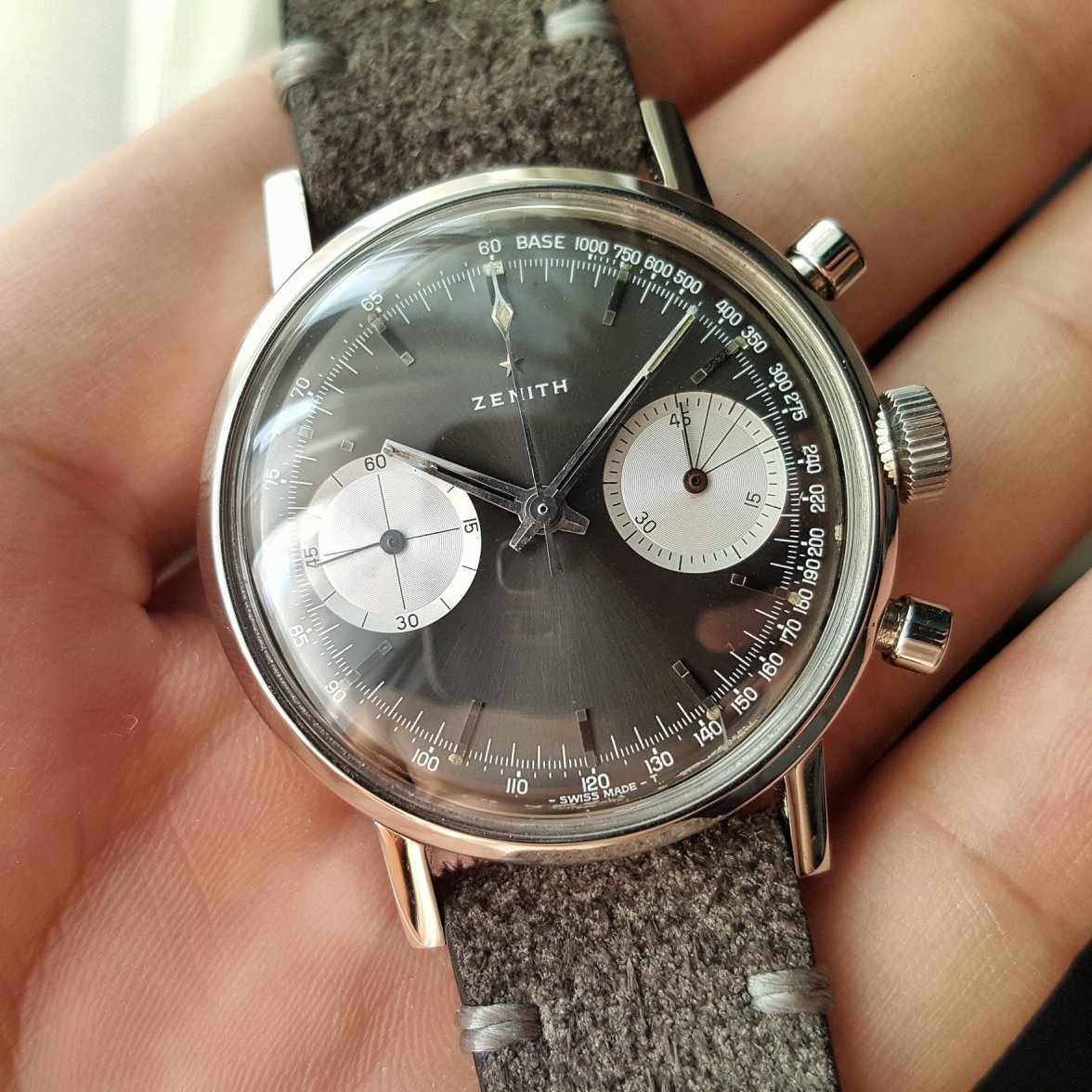Ένα πολύ ενδιαφέρον άρθρο για ένα το σχετικά άγνωστο πρώτο καταδυτικό ρολόι της Zenith

Legend has it that this watch was issued to helicopter pilots, and that it took its name from the Sikorsky S-58, a helicopter of the same era (first produced in 1953). This notion seemed preposterous to me at first... I mean, this is clearly a diver's watch, not a pilot's watch. But then I learned that the S-58 helicopter was also known as the Seahorse (when configured as a transport helicopter) and the Seabat (when equipped for anti-submarine warfare). Here's a Wikipedia photo of the S-58 at work, dropping a sonar probe to hunt for enemy subs:

Now there's a helicopter whose pilot might have need of a highly water-resistant time piece. So now the connection to the helicopter no longer seems utterly ridiculous to me, just... nonsensical. Come on, it's a dive watch.
The helicopter legend was put to rest, to the satisfaction of many Zenith aficionados, by Tony C., a Zenith collector who posted this response from Zenith to his inquiry regarding the term "S.58" on the O&P forum a couple of years ago:
Dear Sir,
Many thanks for your interest in ZENITH watches.
The collection " S 58 " means S = Super water-resistant up to 150
meters and 58 for the year of launching the model.
So nothing to do with helicopter Sikorsky S 58.
With my best regards.
Marc Roethlisberger
ZENITH INTERNATIONAL SA
Customer Service
In that same thread, another collector, Celestograph, proposed that the "S" referred to an improved version of the Zenith Sporto model and that the "58" referred to the International Geophysical Year. I can't say that I put any stock in the Sporto connection - especially since a Zenith representative has reportedly stated that the 'S' stands for "Super" - but the Geophysical Year idea has gained some traction with me. I can't think of another reason why a dive watch would feature the year of its introduction so prominently, on both the dial and the case back. And Celestograph notes that other manufacturers such as JLC and Gruen dedicated models to that event.
So, in my personal Zenith belief system, 'S' stands for Super water-resistant and '58' stands for 1958, and '58 may have been included in the model name because it was the International Geophysical Year. Helicopters and Sportos are out.
Rössler (p.147) tells us that the S.58 was introduced in 1958 and that "the army was the target customer, but technicians, chemists and similar professionals could benefit from it," a silly notion based, perhaps, on the silly French advertising copy below, which depicts the early, bezel-less manual-wind S.58 among some pretty reef fish, because it's a dive watch, super-ètanche, supportant 150 mètres de plongée, not a helicopter pilot watch or army watch or chemist watch or technician watch. This was just a smart advertising guy trying to sell a dive watch to science geeks; the more things change, the more they remain the same.

Rössler goes on to say that Cairelli bought up the entire initial production run of 2500 for the Italian navy... OK, now you're talking...
The first run of S.58's contained a manual-wind Cal 120 with hacking feature. Subsequently (Rössler says two years later), an automatic model was released. The automatic S.58's seem to have been powered initially by the Cal 133.8 bumper movement, and next by the Martel-based workhorse, the 2542 PC. Here is an example of a 2542 PC S.58 recently sold on eBay, posted in another thread in this forum:

Now, on to my watch, which is identical to the example shown in Rössler, with the Cal 120 inside. The movement serial number (very slightly earlier than the Rössler example) dates its production to 1960, probably at the tail end of the initial run of manual S.58's, by which time the bidirectional external bezel had been added. Enough talk... now photos:

























